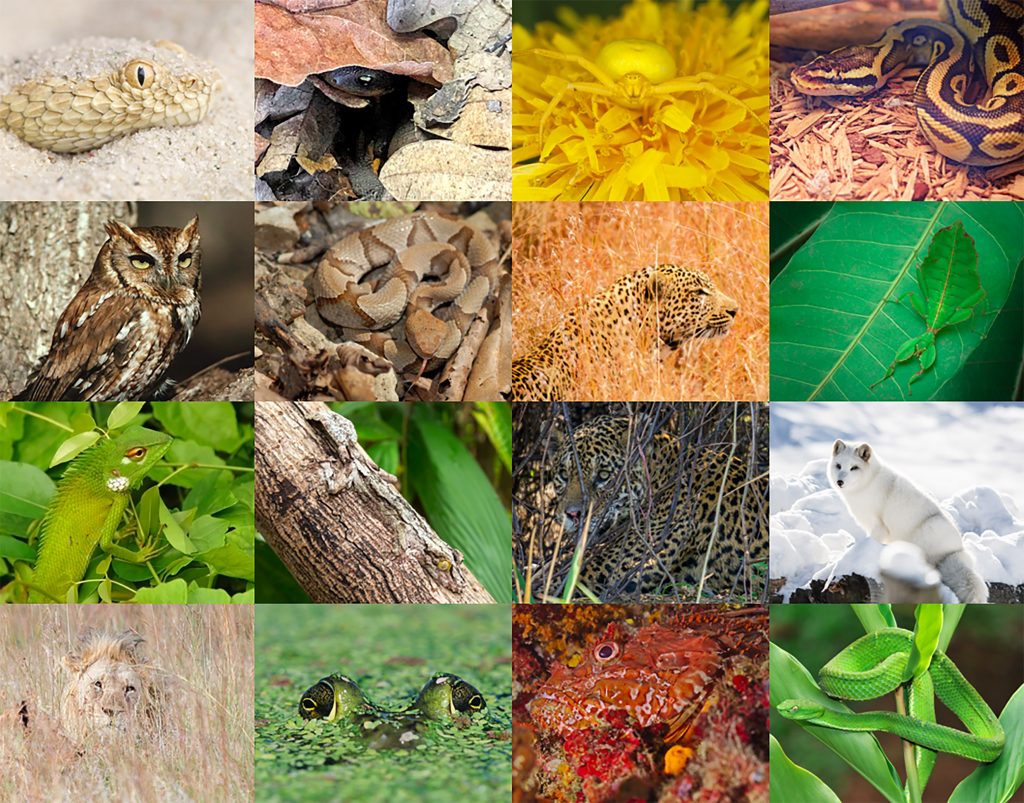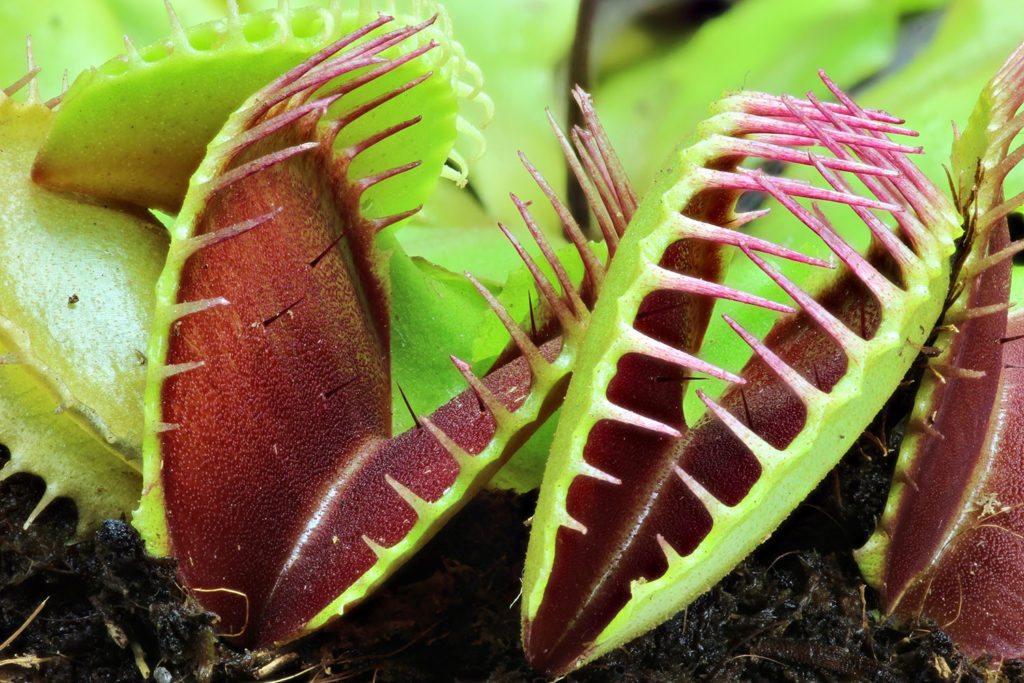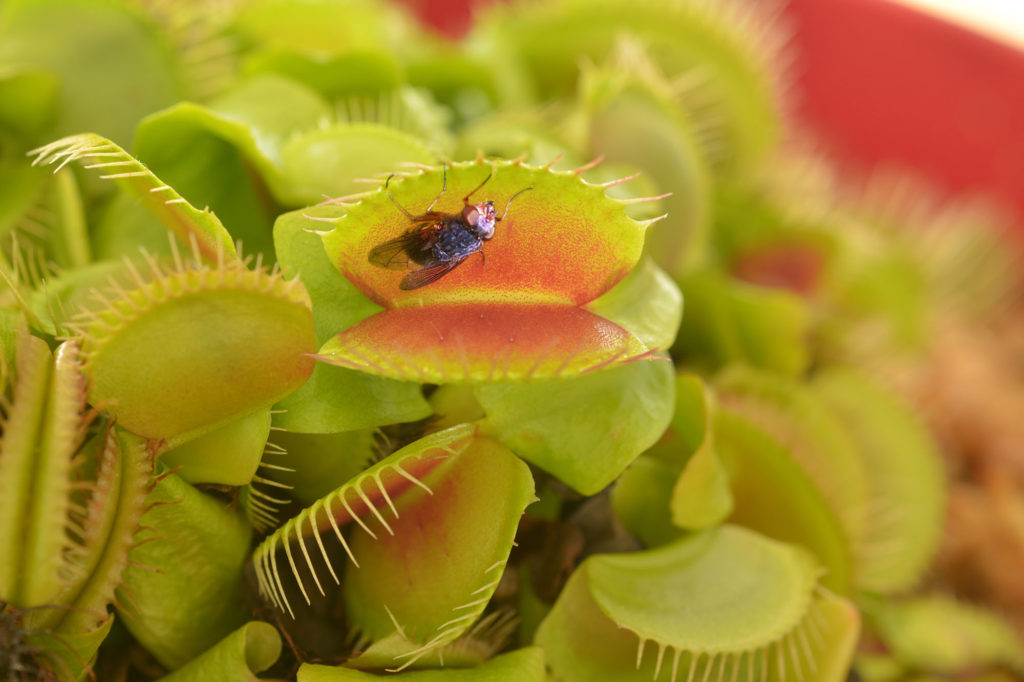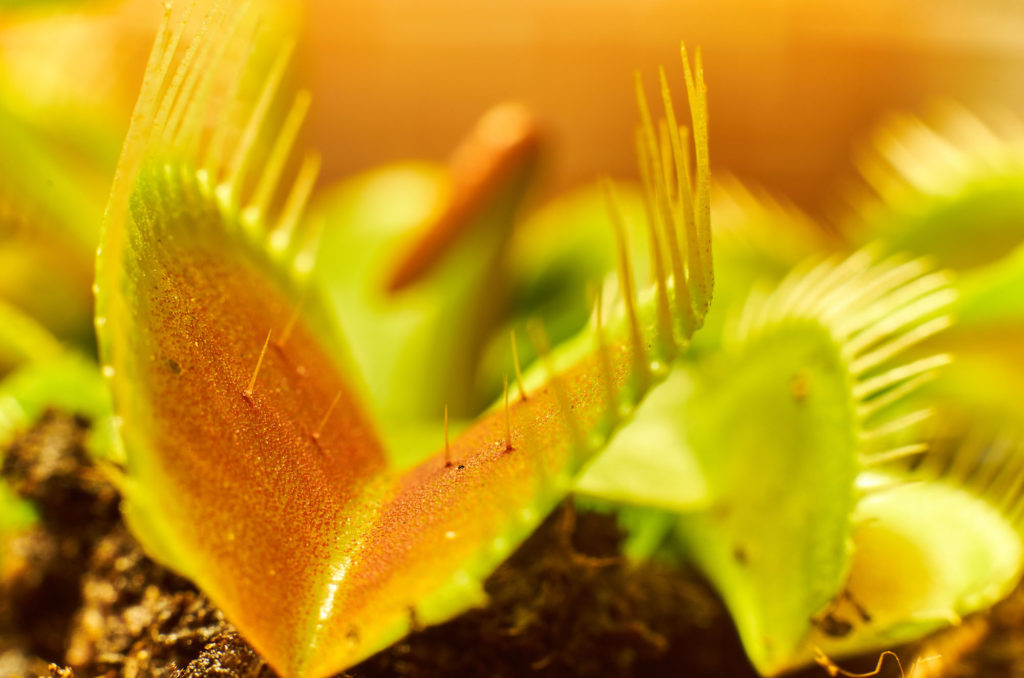
Predation & Herbivory One Organism Benefits; The Other is Harmed


Predation & Herbivory Objectives:
- Describe tactics and weaponry predators use to capture prey.
- Distinguish between grazer, browser, and algivore herbivores.
- Explain how and why carnivorous plants catch prey and provide examples.
Catching prey is not an easy task, predators expend energy, can be injured, and still not catch enough food to survive. Certain genetically programmed structures and learned strategies make catching prey more likely to occur.
Humans have a huge advantage in capturing prey. It’s not just modern weaponry, it is having built-in advantages like a brain that can develop tactics, hands that can fashion and use weapons, and the ability to move quickly through a variety of environments.
Predation (+ -)

This video provides an overview of predator strategies.
This crocodile has a variety of advantages: camouflage, stealthy movement, speed, strength, and weaponry.
You can imagine how a prey animal may not even see it coming.
Piranhas form large schools in South American rivers and can kill prey fish with their powerful jaws and sharp teeth.
Watch this classic predator move: turning its back on the camera.
Preying mantises (also called praying mantises) use a variety of techniques to capture their prey.
Our native mantises have green camouflage color and are shaped like grass blades. They are hard to see even when you are looking for them.
Ghost preying mantises look like dry leaves and sway back and forth like a leaf in the breeze as they move in on their prey. This species will grow to about four inches in size
Often confused with detritivore millipedes, centipedes are primarily predators.
This centipede appeared on our couch while we were videoing, possibly hunting the massive number of fruit flies that have escaped our enclosures. Centipedes are fast, strong, and typically camouflaged in the dirt.

Predators use a variety of weapons to immobilize prey. Rattlesnakes, known for their rattling tail that may warn away their potential predators, have fangs that deliver a hemotoxic venom that disrupts blood clotting and destroys tissues.
Even though there are dozens of rattlesnake species in the Americas, the majority are declining due to habitat loss and direct extermination.
Spiders also use fangs and venom to immobilize prey. This dragonfly could destroy the spider’s web, and it takes a great deal of energy and time to build a new one.

Many carnivorous vertebrates use talons (birds) and claws (reptiles and mammals) to hold on to prey.
Felids, the cats, have curved claws that easily penetrate prey skin.
Uschi is “kneading,” gentle claw extension and retraction. Kittens may use this to stimulate milk release from their mothers.

Prey are not defenseless. They can run, fly, maneuver, fight back, freeze, hide, or a combination of these.
If you have ever tried to pick up an unwilling rabbit, you know they can kick, bite, and injure a potential predator.
Herbivory (+ -)
Deer are examples of large herbivores that continually ingest plants.

Herbivory is consumption of producers, typically plants or algae. There are many specific types of herbivores, including:
-
Grazers: Eat a variety of plant leaves, like grasses, that are close to the ground
-
Browsers: Eat a variety of plant parts, including leaves, branches, and fruits
-
Algivores: eat algae
Identify these three herbivores as eating as a grazer, browser, or algivore.



Porcupines, like this rescued and rehabilitated individual at the High Desert Museum, are herbivores that eat a variety of plants.
In addition to fresh carrots and greens, this porcupine is being fed small branches and a prepared alfalfa block. What type of herbivore is this?
A Special Case: Carnivorous Plants

Carnivorous plants can acquire nutrients through their roots and photosynthesize with their leaves, but they can also supplement their diet by capturing prey.
These plants are often found in nutrient-poor soils where decomposition is slow, like an acidic bog.

Leaves are modified as traps. The leaves of Venus Fly Trap (Dionea sp.) have tiny trichomes (hairs) that trigger the leaf to snap closed, trapping the prey.

Sundew plants have small hairs (trichomes) that are covered in a sticky substance that trap insects.

Pitcher plants have leaves shaped like cups. Trichomes lead the prey to the water where they drown and are digested by enzymes.

Baker Beach in Oregon, on highway 101 just north of Florence has tiny sundews. Stick to the trail, these are hard to see and low in population size.
Just across the road from Baker Beach is the Darlingtonia Wayside with a completely different carnivorous plant.

Leaves have a unique modification suited for catching insect prey.
The next section introduces symbiosis, close association between organisms over time.

Check your knowledge. Can you:
- Describe tactics and weaponry predators use to capture prey?
- Distinguish between grazer, browser, and algivore herbivores?
- Explain how and why carnivorous plants catch prey and provide examples?



